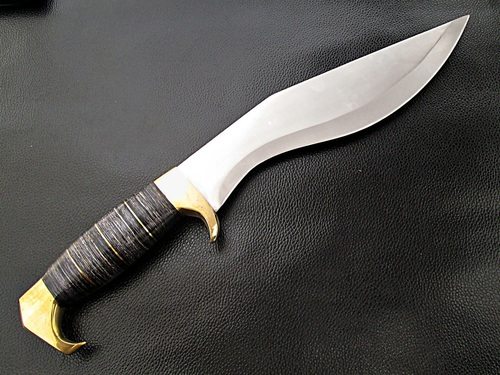If you’re going to be trekking, camping or otherwise exploring the wilderness, then no doubt you are someone who has a real taste for adventure. Eventually, you’ll find that this can become a very addictive hobby, as you start thinking up all the scenarios you could conceivably find yourself in and how you would get out of them.
Thus, your survival toolkit begins to grow and expand. And the most fun part? The knives, axes and blades!
Eventually, you’ll end up with an armoury that would make The Punisher jealous. But until then, you’ll need to pick and choose those tools most beneficial for your self-sufficiency. And with that mind, you’ll likely eventually find yourself picking between a kukri and a machete. What’s the difference and which is better?
Kukri vs Machete: Knowing the Difference
At first glance, a kukri and a machete will look very similar, which is what will lead many people to ask this question. However, looks can be deceiving and in fact, these are completely different tools that serve unique purposes.
While both are curved blades, the kukri features a steep curve with a round dip right at the belly of the blade. This comes to a heart-like point and in turn, this has an impact on the way that the blade is swung. If you are looking for something to clean and dress animals after hunting, then you could consider a kukri.
Now, a kukri is a type of machete. That means that all kukris are machetes but not all machetes are kurkis! Another type of machete is the parang. Then you have the barong, the tapanga, the cane, the bolo, the golok… The most commonly known form of machete is the Latin machete and this also sometimes goes by the name ‘regular machete’.
This type of machete gets larger as it reaches the tip and the point will raise up slightly at the top, giving a swooped belly beneath the top. The blade is mostly straight and this makes it useful for chopping through foliage too. You may also want to invest into a good knife sharpener. Check out Gear Hungry to see the top knife sharpeners on the market
The Pros and Cons
So, which should you choose? Well of course, that will all come down to your intended use. The kukri is a fantastic tool for cleaning and dressing animals in the field owing to its curved shape. It is also useful for carving tinder, thanks to the curve. Simply brace the back of the blade against your chest and twirl the wood through that shape. The dual surfaces also mean you can use the same tool for both cutting and chipping a tree. Finally, the crook of the body means you can dig and scrape with the tool.
But then again, the ‘regular machete’ is perhaps better suited to chopping through foliage and particularly at a close distance. The bend in the blade means you can use a kukri this way, but you will need to do so from a further distance.
Of course, the regular machete is also better for making straight, uniform cuts, seeing as the blade is straight. It can be used at any distance and is also useful for fishing and hiking. They’re easy to sheath and carry.
In some ways, you might consider the machete to be a more useful ‘general tool’, while the kukri has particular benefits that make it easier to use in the right circumstances.
So which should you invest in if you’re heading into the wilderness? Well, if you’re new to all this, you’ll probably want a regular machete to provide the broadest range of uses and benefits. But if you’re more experienced, you might want to add a kukri in there too!







